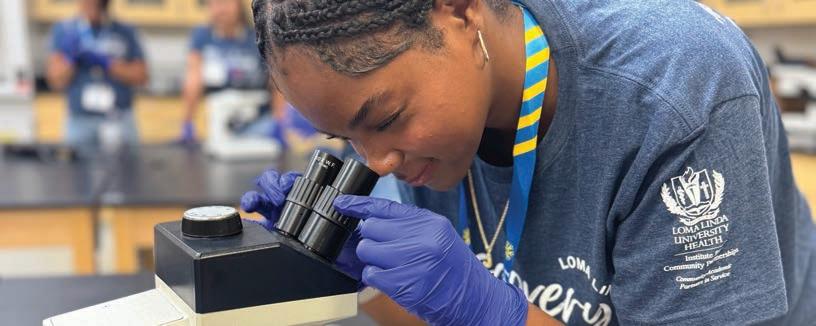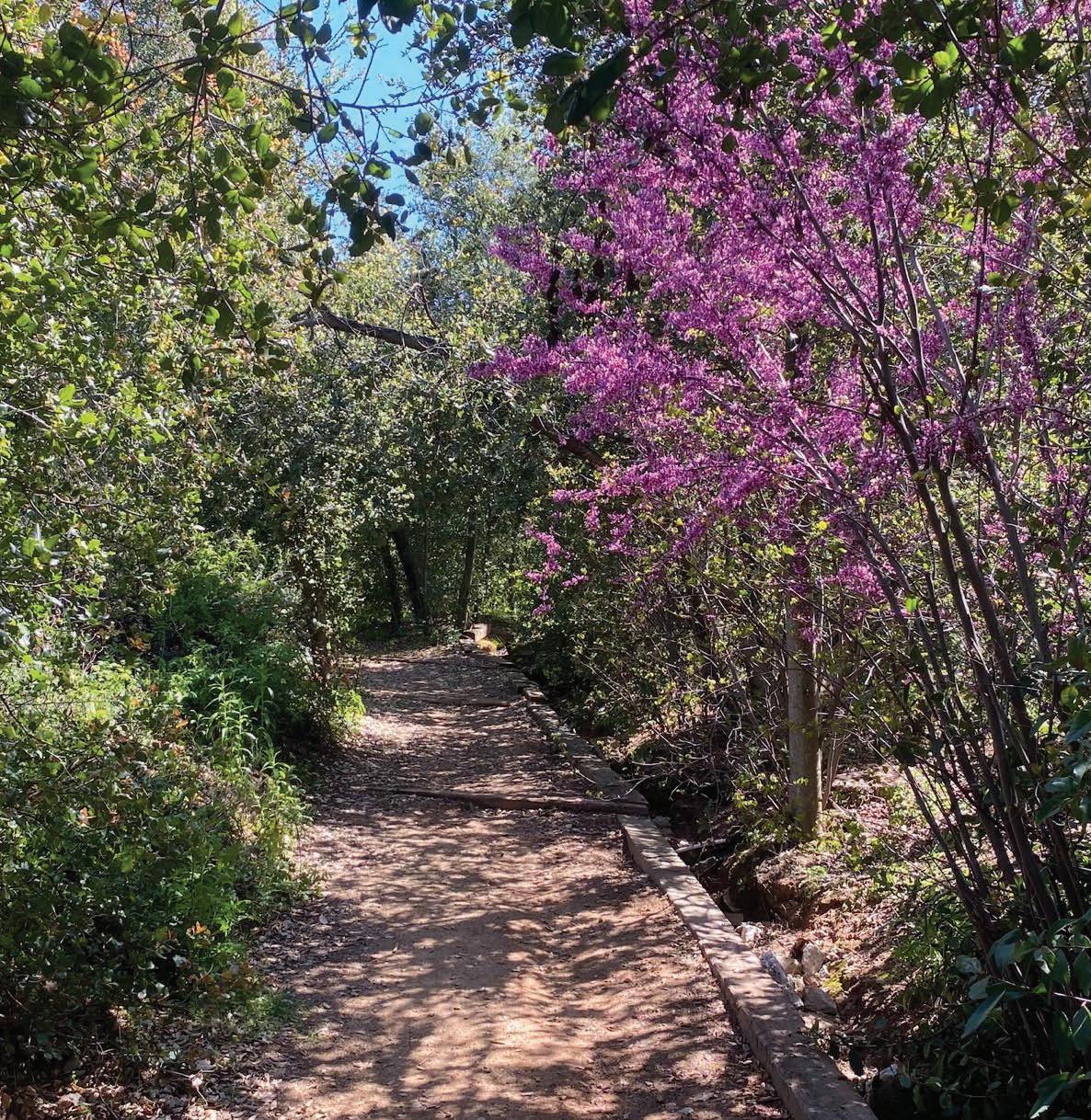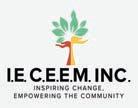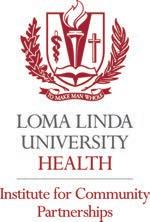
























To Our Valued San Bernardino and Riverside Community Members,
Loma Linda University Health’s (LLUH) 120-year history is deeply rooted in serving the Inland Empire. From health lectures with the San Bernardino school district in 1907, to medical home visits with Serrano Tribal members in the 1910s, to evening clinics for migrant farm workers in the 1960s that grew into the Social Action Corps (now SAC Health System), service to our community has always been part of our DNA. This commitment reflects our mission “to continue the teaching and healing ministry of Jesus Christ.” We are guided by the words of Paul in Philippians 2:3-4: “Do nothing out of selfish ambition. Rather, in humility, value others above yourself, not looking to your own interests but to the interests of others.” In that spirit, we pledge that every community investment is made with humility, compassion, and in partnership, working together to co-create an Inland Empire where everyone can live a healthier life.
This co-creation process is formalized every three years through our Community Health Needs Assessment (CHNA) and the resulting Community Health Implementation Strategy (CHIS). We are grateful to the more than 1,300 community members across the Inland Empire who generously shared their time, perspectives, and lived experiences to help shape this plan. The FY 2026 -2028 CHIS is built on your input, aligned with regional priorities, and informed by LLUH’s capacity to create meaningful impact. Our four strategic priorities for the next three years are: Meaningful Work and Wealth, Lifelong Learning, Basic Needs for Health and Safety, and a Thriving Natural World.
These priorities reflect your call for expanded educational and workforce opportunities, equitable healthcare access, prevention and early support for underserved children and families, and sustainability measures that build climate resilience. This plan, adopted by our Board of Directors on September 9th, 2025 will be guided by the LLUH Institute for Community Partnerships, with a commitment to remain responsive to emerging needs over the next three years.
At LLUH, our mission extends beyond the nearly 2 million patients who seek our care each year—it embraces the nearly 5 million residents who call the Inland Empire home. Whole person care happens both inside and outside our hospital walls, and we are committed to walking alongside you—our partners, neighbors, and friends—to make the Inland Empire a healthier place to live for all.


Anthony Hilliard, MD, FACC Chief Executive Officer





Developed in response to the 2025 Community Health Needs Assessment, the Community Health Implementation Strategy reflects Loma Linda University Health’s plan to address the Inland Empire’s most pressing unmet health needs. The assessment gathered input from more than 1,300 unique community voices, with over 30 community-based organizations partnering to reach medically underserved, low-income, and marginalized populations through surveys, community conversations, and key informant interviews.
Guided by the Vital Conditions for Health and Well-Being framework, this plan focuses on “multi-solvers”—programs and investments that create positive impact across multiple areas of well-being.
By aligning community priorities with LLUH’s mission, regional strategies, and organizational strengths, the CHIS directs resources toward initiatives that tackle interconnected challenges and produce lasting improvements in both health and quality of life.
The FY 2026-2028 CHIS focuses on four strategic investment areas:
• Improving economic mobility through educational and workforce opportunities — Expanding access to learning, mentorship, and career pathways in healthcare and beyond.
• Expanding equitable access to care and strengthening systems that connect patients to health, behavioral health, and supportive resources — Increasing service capacity, improving care coordination, and reducing financial barriers.
• Promoting prevention and early support to improve lifelong health for underserved children and families — Advancing food security, early childhood development, and family health education.
• Advancing sustainability to improve health, reduce environmental impact, and strengthen climate resilience — Integrating sustainable practices and fostering environmental stewardship within our system and community.
On behalf of our six hospitals, operating under three separate licenses, LLUH will advance these goals through direct programming, regional partnerships, and targeted investments in nonprofit organizations serving San Bernardino and Riverside Counties. The CHIS will be advanced by the Institute for Community Partnerships to ensure strong coordination, alignment with LLUH’s mission, and accountability for delivering measurable impact in collaboration with community and regional partners.
Anticipated impact: These initiatives will expand pathways to higher-skilled, better-paying careers—particularly in health professions— helping participants advance economically while addressing the region’s critical healthcare workforce shortage.
STRATEGY
STRATEGY
Introduce middle and high school students to careers in health
Vital Conditions
















Potential Resources & Partners
Initiatives
65 high school students participate in the summer Discovery health pathway program annually to prepare for college and explore various health professions.
Host 3 My Campus sessions to expose Inland Empire middle and high school students to health professions; reach 180 students annually.
Engage at least 25 high school students annually in Robotic Surgery Simulation events inspiring STEM and health careers.
Develop a campus-wide mentorship program to pair health pathway alumni students with an LLU student mentor from a field of their interest.
LLU Community-Academic Partners in Service, LLUH Pathways Programs, Loma Linda University, School Districts, Inland Health Professions Coalition, LLUH Faculty & Staff, SAC Health, BLU Foundation, La Sierra University, Community Benefit Funding





Support educational and workforce opportunities for youth and adults from under-resourced communities
Vital Conditions










Potential Resources & Partners
Initiatives
Provide 50 scholarships/stipends to at-promise youth in the region annually to support their transition to higher education.
Provide 20 scholarships annually to underserved students pursuing higher education in health-related fields, supported by a minimum of $70,000 in community benefit funding each year, with schools providing matching funds to double the impact.
Facilitate at least 40 academic tutoring and 25 music tutoring sessions for local K-12 students annually through the La Escuelita program.
Invest in workforce development with community-based partners to increase outreach to marginalized and specialty populations and their access to livable wage-paying jobs.
Community Health Investment Awards, Community Benefit Scholarships, Loma Linda University, San Manuel Gateway College, Community-Based Organizations, San Bernardino City Unified School District




Anticipated impact: These efforts will reduce delays in care, connect more patients with the right services at the right time, and improve continuity of treatment—leading to better health outcomes and fewer preventable hospital visits
Expand access to pediatric and emergency behavioral health care through new clinic sites and specialized treatment units







Complete construction and begin operations of new LLU Children’s Hospital outpatient specialty clinics by the end of 2026, increasing access to pediatric subspecialty care for Inland Empire families.
Open new pediatric urgent and primary care clinics in underserved areas.
Open two EmPATH (Emergency Psychiatric Assessment, Treatment, and Healing) units—one pediatric and one adult—by 2026 to improve access to behavioral health services and reduce pressure on emergency departments.
Potential Resources & Partners CA Prop 4 funding, philanthropic support, California Mental Health Services Oversight and Accountability Commission, LLUH behavioral health team
Identify and address social determinants of health through routine screenings and targeted referrals
Advance Community Health Worker integration in hospital systems and school districts




















Potential Resources & Partners
The Community Health Worker (CHW) team serves 550 participants annually, providing 1,900 encounters to address health-related social needs and support care coordination.
Integrate CHW workflows into Compass Rose to enable outpatient referrals by December 2026.
Complete CHW buildout in EPIC to enable inpatient referrals and submit documentation for service reimbursement.
Establish a referral pathway from the Emergency Department to CHWs for patients with identified social needs.
Community Health and Education Workers (CHEWs) conduct 3,000 home visits to address the social determinants of health and education for students and families.
Hospital-based CHWs, LLUH Hospital-based violence intervention program, CalAIM Enhanced Care Management, LLUH Social Work, San Bernardino City Unified School District, Chaffey Joint Unified School District
Reduce financial barriers by strengthening access to charity care and supporting public coverage for underserved populations




Leverage SDOH screening data to identify patient needs, strengthen referral pathways, and implement targeted interventions that support improved health outcomes.


Potential Resources & Partners
Expand Help Me Grow Inland Empire to link more children with prevention and early intervention services; increase developmental screenings by 10% (baseline: 7,000/year) and family support engagements by 10% (baseline: 2,400/year).
Internal data, Help Me Grow Inland Empire Program,
Empire Health Plan









Improve charity care access for eligible patients by streamlining application processes and enhancing patient and staff awareness of financial assistance.
Engage in advocacy to ensure Medi-Cal remains a stable source of coverage for populations facing the greatest health disparities. Potential Resources & Partners
LLUH Charity Care Task Force, Dollar For, LLUH Government Relations, American Hospital Association, Children’s Hospital Association, Private Essential Access Community Hospitals (PEACH), California Children’s Hospital Association (CCHA)




Anticipated impact: Building on LLUH’s 120-year history of promoting health and well-being, these initiatives will strengthen the foundations for lifelong health by improving nutrition, supporting healthy child development, and increasing family knowledge and skills that help prevent future health challenges.
STRATEGY
Address food insecurity through community gardens, green spaces, and access to affordable healthy food
Vital
Conditions














Potential Resources & Partners
STRATEGY
Initiatives
Incorporate natural play areas, an outdoor kitchen, and seating at the Jardín de la Salud designed with garden members and youth to encourage engagement in educational activities for healthy lifestyles.
Coordinate 20 fresh produce distributions annually to help facilitate healthy food access for Inland Empire families.
Facilitate 25 workshops annually at the Jardín de la Salud, in collaboration with garden members and partners, engaging at least 325 participants to expand community knowledge on gardening, sustainability, and wellness.
Identify and implement at least two strategies to improve food security for patients and/or community members.
Inland Empire Health Plan, Bienestar, Community-based organizations
STRATEGY
Promote healthy development and well-being through education, physical activity, and connection to nature
Vital
Conditions















Potential Resources & Partners
Initiatives
Engage at least 250 local youth in the Goal 4 Health soccer league, with at least 40% coming from under-resourced neighborhoods.
Facilitate 25 parent-informed workshops as part of La Escuelita engaging families in topics including physical health, mental health, and life skills.
Engage at least 200 parents from local school districts in Parent Health Institute (PHI) educational workshops.
Engage 350 participants annually through garden workshops, day trips and overnight trips via the SHiNE Program to green spaces throughout the region to promote physical and mental wellbeing.
LLU Community-Academic Partners in Service, CHEW Program, San Bernardino City Unified School District, California State Parks, Outdoor Outreach
Promote early childhood development and maternal-infant health through literacy-based interventions and community partnerships
Vital Conditions






Potential Resources & Partners
Initiatives
Distribute 20,000 books annually through the Reach Out & Read program to encourage healthy growth and early literacy.
Collaborate with regional partners and coalitions to advance maternal and infant health equity; invest in community-based organizations implementing solutions that improve outcomes for historically underserved populations.
Reach Out & Read, First 5, American Academy of Pediatrics, 15 pediatric clinics, Community Health Investment Awards








STRATEGY
Anticipated Impact: These efforts will reduce environmental health risks, lower LLUH’s ecological footprint, and enhance resilience to extreme heat, wildfires, utility shutoffs, and other climate-related impacts that threaten community well-being and healthcare operations.
Integrate sustainability into clinical, operational, and purchasing practices
Vital Conditions Initiatives






Potential Resources & Partners
STRATEGY
Implement at least one new high-impact sustainability project annually in areas such as waste reduction, energy efficiency, emissions reduction, water conservation, or sustainable purchasing.
Develop systems to monitor and report on key sustainability data— including energy use, emissions, and waste—by March 2027 to enable better tracking and decision-making.
Submit annual Practice Greenhealth awards application for benchmarking.
LLUH Environmental Sustainability Committee, Practice Greenhealth, community benefit operational support, Geographic Information Systems
Foster a culture of sustainability through education, staff participation, and community engagement
Vital Conditions Initiatives













Potential Resources & Partners
Increase organizational readiness to provide essential medical services and protect community health during environmental emergencies.
Implement at least one staff engagement strategy by June 2027 to increase awareness of sustainability goals and empower action.
Share at least 10 updates annually through internal and external communications to highlight sustainability goals and progress.
Facilitate 24 outdoor recreational activities annually, reaching at least 375 youth and family participants through outdoor leadership education, environmental engagement, and access to nature.
LLUH Environmental Sustainability Committee, Practice Greenhealth











The 2025 Community Health Needs Assessment identified many health and social challenges across the Inland Empire. LLUH prioritized needs based on their magnitude, alignment with our mission and expertise, potential to reduce disparities, community input, and feasibility for measurable impact. The table shows which needs will be:
•Directly addressed—Led or co-led by LLUH through initiatives in this CHIS.
•Indirectly addressed—Advanced through partnerships, funding, capacity-building, or in-kind support
•Not addressed—Outside LLUH’s current scope or resources, but monitored for future alignment. CHNA
Basic Needs for Health & Safety
Healthcare Workforce
Access to Healthcare
Medi-Cal Access
Maternal & Infant Health
Communicable Disease Prevention
Food Security
Chronic Disease Prevention
Substance Use Treatment
Trauma Prevention
Lifelong Learning
Early Childhood Education
School Attendance
Youth Mental Health
Meaningful Work & Wealth
Economic Stability
Medical Debt Relief
Wealth-Building Opportunities
CHNA
Humane Housing
Affordability Housing
Housing Stability
Reliable Transportation
Transportation to Care
Walkable & Bikeable Neighborhoods
Public Transportation Access
Thriving Natural World
Cleaner Air
Climate Resilience
Protection from Extreme Heat
Access to Nature
Belonging & Civic Muscle
Social Connection
Civic Engagement
*Outside scope and expertise; future consideration
The 2025 Community Health Needs Assessment acts as our “North Star” in addressing the unmet health needs in our region. We are deeply grateful to all community members and key informants who shared their unique experiences and expertise during this process to support the creation of our implementation strategy. We also wish to thank the following partner organizations for their work in ensuring that a wide range of diverse perspectives were included in our findings:









































Juan Carlos Belliard, PhD, MPH
Assistant Vice President | Community Partnerships
Director | Institute for Community Partnerships
Community Benefit
Jasmine Hutchinson, MSPH
Director I Community Benefit
Associate Director | Institute for Community Partnerships
Mark Camarena, MNLM
Fiscal Manager | Community Benefit
Katie Jang Coordinator | Community Benefit
Program Design and Evaluation Unit
Sharelene Gozalians, DrPH
Lead Evaluator
Valeria Rodarte, MPH
Research Associate
Nery Pereira
Administrative Assistant
Community-Academic Partners in Service
Taylor Pope, MPH
Director | Community-Academic Partners in Service
O. Siquem Bustillos, MPH
Program Manager | CommunityAcademic Partners in Service
Miguel Cruz, MPH
Program Coordinator | Jardín de la Salud Community Garden
Evelyn Perez
Program Coordinator | Outdoor Equity
Perla Madera
Program Coordinator | Outdoor Equity
Mark Alvarez Fellow | Outdoor Equity
Community Health Worker Integration
Cristie Granillo, PhD, MEd, MS Manager | School District CHW Integration
Marisol Flores, MSW
Manager | Hospital-Based CHW Integration
Camille Saye Manager | Hospital-Based CHW Integration
Lucia Cloud, RN Coordinator | Hospital-Based CHW Integration
Erica Landin Community Health Worker | VIP
Genesi Ramirez Leon Community Health Worker | VIP
Richard Salazar
Community Health Worker | VIP

Rosa Perez Quintanilla
Community Health Worker | Perinatal
Candy Rangel
Community Health Worker | Perinatal
Janette Bucio
Community Health Worker | ACES
Esmirna Zapata
Community Health Worker | ACES
Mykayla Miller
Community Health Worker | SCC
Aliett Saldana
Community Health Worker | ID Clinic
Duane Fitzpatrick
Community Health Worker | ED
Selina Peña
Community Health Worker | ED
Georgette Rivera-Leon
Community Health Worker | ED
Yanina Chujutalli
Community Health Worker | DTC/DOD
Dr. Juan Carlos Belliard Director, Institute for Community PartnershipsLoma Linda University Health
Mark Camarena Fiscal Manager, Community Benefit Loma Linda University Health
Dr. Richard Chinnock
Chief Medical Officer and Physician-In-Chief, Loma Linda University Children’s Hospital Board of Trustees Loma Linda University Health
Dr. Silvi Cuizon Director for Health Equity Loma Linda University Health
Stacey Davis Health Equity Program Manager San Bernardino County Department of Public Health
Dr. Willie Davis
Dr. Alex Dubov
Assistant Dean, Associate Professor, Program Director of PharmD Loma Linda University School of Pharmacy
Associate Professor, Division of Interdisciplinary Studies Loma Linda University School of Behavioral Health
Tammy Garcia-Chang Community Affairs Coordinator Mexican Consulate in San Bernardino
Brad Gates Director, Workforce Development DepartmentSan Bernardino County Economic Development Agency
Monica Guerra Community Solutions Technical Assistance LeadU.S. Department of Transportation
Jasmine Hutchinson Director, Community Benefit Loma Linda University Health
George Lamb President/CEO Faith Advisory Council for Community Transformation
Ginger Ontiveros Chief Executive Officer Tomorrow’s Talent
Dr. Bridgette Peteet Professor, Department of Psychology Loma Linda University
Marcelino Serna Parent/Family Community Engagement Project Specialist San Bernardino County Superintendent of Schools
Salomeh Wagaw Epidemiologist Riverside County Public Health
Jodie Wingo Chief Executive Officer
CHAISR-Community Health Association of Inland Southern Region
Lisa Beardsley-Hardy, PhD General Conference of SDA
G. Alexander Bryant, DMin North American Division
Francis Chan, MD LLU School of Medicine
Shirley Chang, PhD, RN Retired Nursing Educator
Zeno Charles-Marcel, MD General Conference of SDA
Wilfredo Colón, PhD Rensselaer Polytechnic Institute
Daniel Dawes, JD Meharry Medical College
Paul Douglas, MBA General Conference of SDA
Steven Filler, DDS University of Alabama School of Dentistry
Wayne Harris, MD Emory University School of Medicine
Richard Hart, MD, DrPH LLUH
Paul Herrmann, MD, PhD LLU School of Medicine
Anthony Hilliard, MD LLUH
Erton Köhler, MTh General Conference of SDA
Robert Lemon, MBA General Conference of SDA
Thomas Lemon, MDiv General Conference of SDA
José Loredo, MD, MPH UC San Diego School of Medicine
Robert Martin, MD LLU School of Medicine
Barbara McKinney, MD, MPH Physician Surveyor, Joint Commission
Sheryl Moorhead, MS, BSN, RN AdventHealth
Richard Osborn, PhD Retired Educational Administrator
Ricardo Peverini, MD LLUH
E. Albert Reece, MD, PhD, MBA University of Maryland School of Medicine
Sandra Roberts, DMin Pacific Union Conference of SDA
Herbert Ruckle, MD LLU School of Medicine
Jennifer Sacro, Esq Business attorney
Zareh Sarrafian, MBA Riverside University Health System
Randall Schell, MD, MACM University of Kentucky
Eunmee Shim, MSN, RN Fort Washington Medical Center
Ella Simmons, EdD Retired educator and administrator
Laren Tan, MD LLU Faculty Medical Group
Tamara Thomas, MD LLUMC
Gary Thurber, PhD Mid-America Union of SDA
Rodney Wehtje, MBA, CPA Finance executive/consultant
April Wilson, MD LLU School of Medicine
Ted N.C. Wilson, PhD General Conference of SDA
President & CEO
CEO for LLUH Hospitals/Exec VP for Hospital Affairs
CFO for LLUH/Exec VP for Finance
Exec VP for Medical Affairs
COO for LLUH Hospitals & Sr VP for Health Facilities
Sr VP for Children’s Hospitals
Sr VP for Clinical Faculty
Sr VP for Finance, Hospital Operations
Sr VP for East Campus & Surgical Hospital
Sr VP for LLUMC-Murrieta
Sr VP for Clinical Faculty & CFO for LLU Faculty Medical Group
Sr VP for Patient Care Services
Sr VP for Business Development
Vice President for Behavioral Health Services
Vice President for LLUMC Operations
VP of Government Affairs
VP of Finance Clinical Faculty
Vice President for Campus Development
VP for Clinical Faculty Administration
Chief Information Officer for LLUMC
Chief Compliance & Privacy Officer
Chief Medical Officer for LLUCH
Chief of Medical Operations
Chief Nursing Officer for LLUCH
Vice President for Payor Contracting
Richard H. Hart, MD, DrPH
Anthony Hilliard, MD, FACC
Angela M. Lalas, MBA, CPA
Tamara L. Thomas, MD
Lyndon C. Edwards, MBA, MHS
Peter Baker, JD, MBA
Ricardo L. Peverini, MD
Alan Soderblom, MBA
Darryl VandenBosch, CPA
Jonathan Jean-Marie, MHA
Robert Martin, MD LLUH
Helen Staples-Evans, DNP, MS
Daryl L. “Rusty” Oft, MBA
Edward L. Field, MBA
Sara Matus, JD, MBA
Shandra Secor, MBA
Stella Kim
Eric N. Schilt, MBA
Barbara Sharp
Mark Zirkelbach, MS
Tonya Okon-Johnson, JD
Richard Chinnock, MD
Adrian Cotton, MD
Sherry Nolfe, DNP, MS
Kevin J. Lang, MBA
Chief Nursing Officer for LLUMC-Murrieta Denise Robinson, DNP
Chief of Quality & Patient Safety Ihab Dorotta, MD
Sr VP for Advancement Rachelle B. Bussell, MA
Sr VP for Risk Management & Human Resource Management Mark L. Hubbard
Vice President for Risk Management Raul Castillo, MBA
Vice President for Graduate Medical Education Daniel W. Giang, MD
Vice President for Revenue Cycle Lucas Secor, MBA, CPA
Vice President for Finance Llewellyn L. Mowery, MS, CPA
Vice President for Finance, FP&A and LLUSS Emily Ndlela, MBA, CPA
Vice President for Institutes Mark E. Reeves, MD, PhD
Vice President for Spiritual Life and Mission Randall L. Roberts, DMin
Vice President for Research Affairs Travis Losey, MD
Corporate Secretary Myrna L. Hanna, MA
Assistant Secretary Orlando L. Huggins
Assistant Secretary Whitney P. Henderson, MBA
Exec VP, University Affairs/Provost Ronald Carter, PhD
Vice President for Student Experience Karl M. Haffner, PhD
Dean, School of Nursing Shawn Collins, DNP, PhD
Dean, School of Behavioral Health Beverly J. Buckles, DSW
Dean, School of Dentistry Robert Handysides, DDS
Interim Dean, School of Pharmacy Kyle Sousa, PhD
Dean, School of Allied Health Professions Craig R. Jackson, JD, MSW
Dean, School of Public Health Adam Arechiga, PsyD, DrPH
Dean, School of Religion Leo S. Ranzolin, Jr., ThD
Vice President & Chief Information Officer David P. Harris, PhD
Sr VP for Financial Affairs
Rodney D. Neal, MBA


